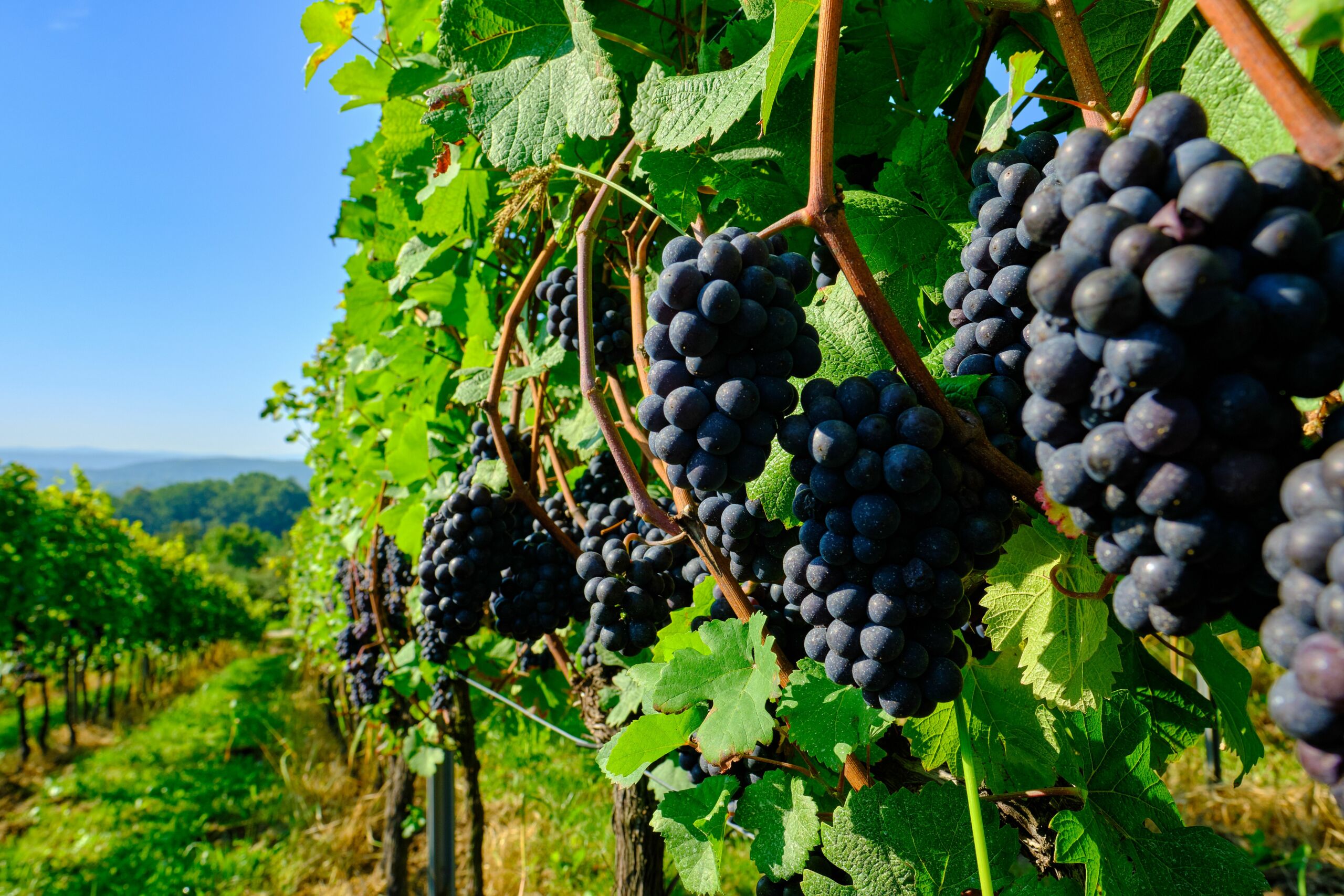E-commerce in Poland
10.07.2024
According to the data from the Chamber of Digital Economy, the number of online stores in Poland has been growing for a decade, and in recent covid years this growth has reached the dynamics of 14% annually. Such results put our country at the forefront of the fastest growing e-commerce markets in Europe. About 150,000 companies sell online either through their own website or on the most popular Allegro sales platform in Poland.
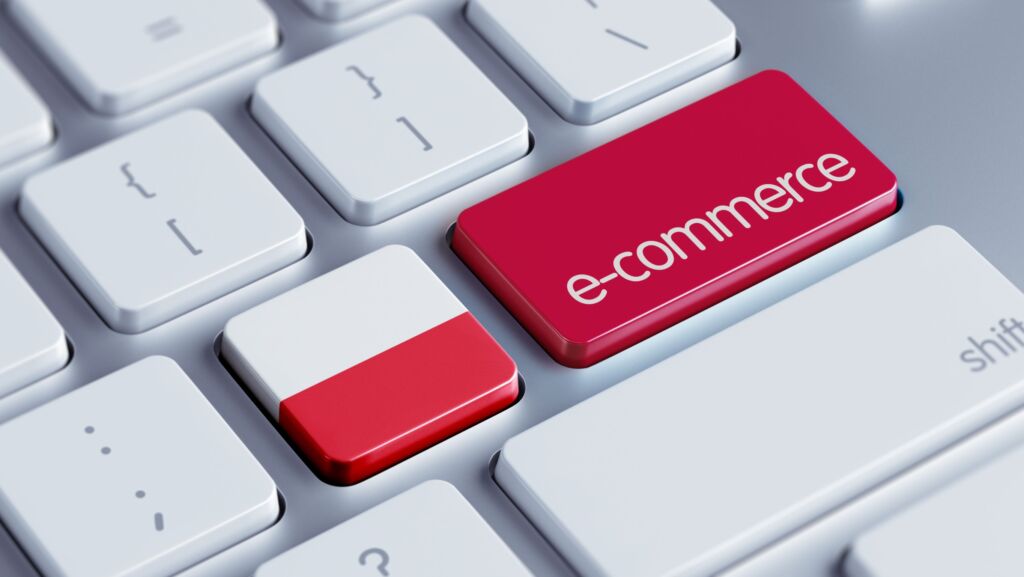
Over the last decade, Poland’s e-commerce has developed at a dazzling pace:
- the number of households with Internet access increased from 60% (in 2012) to 93.3% (in 2022),
- from 45% (in 2013) to 90% (in 2022) was the increase in the number of Internet users shopping online,
- the value of the B2C e-commerce market increased 5 times,
- the value of the B2B e-commerce market increased 3.5 times,
- the share of digital sales in total retail sales increased 3 times,
- the number of registered online stores increased 2.5 times.
84% of Poles regularly use the network. The list of activities undertaken by our compatriots on the Internet has increased significantly. Of course, information content is still the most popular, but we also use the other possibilities.
Internet banking
The Polish Banks Association’s report shows that the number of customers actively using online banking is invariably increasing. Data for the fourth quarter of 2022 show that there are currently over 22 million such users. Almost 88% of them actively use the banking mobile application. At the end of 2022, the largest percentage increases were recorded among mobile only customers. In relation to the third quarter of 2022, this is an increase of as much as 9%. There are already over 13.5 million such customers.
“Poland is one of the European leaders when it comes to mobile banking. We owe this to excellent applications. For example, BLIK, which is becoming popular as a system enabling payments in e-commerce”
– Włodzimierz Kiciński, Deputy Chairman of the Polish Banks Association.
The results of surveys conducted for the purposes of the “E-commerce in Poland 2022” report indicate that the most frequently chosen online payment method is the possibility of ordering a quick transfer via a payment service – this answer was indicated by as many as 70% of respondents. In second place was the aforementioned BLIK (58%), whose popularity is growing rapidly. It is a mobile payment system that was launched in 2015. With its help, smartphone users can pay cashless both in stationary and online stores, withdraw and deposit cash at ATMs and make transfers to a phone number. Deferred payments are also gaining in importance (12%) because they give customers more freedom to buy.
In addition to making payments using electronic banking, Internet users also undertake other shopping-related activities: they look for information about products and services, read opinions, look for shopping inspiration, compare prices and offers, look for promotions, buy, share their opinion about the purchase or track their orders. The search for information about products and services is shared by 3 out of 4 Internet users and 2/3 of all Poles.
What devices do Poles use online?
Back in 2013, desktops and laptops played a leading role. Mobile devices accounted for just over 10% of Internet traffic. Currently, the situation is quite different – it is mobile devices that generate more than half of network traffic. In addition to the smartphone, smartwatches and smart TVs are also beginning to be used for shopping. However, they still lack key features that will make shopping easy and fun. For Poles, the smart approach is characteristic, which means that they use the devices, thanks to which they can do shopping quickly, cheaply and without any problems. The most popular are therefore laptops (73%) and smartphones (75%). Interestingly, in 2022, for the first time in history, the advantage of a smartphone over a laptop was recorded when it comes to devices most often used in the e-shopping process. While a year earlier m-commerce was particularly popular among young respondents, in 2022 it is already a trend covering all respondents.
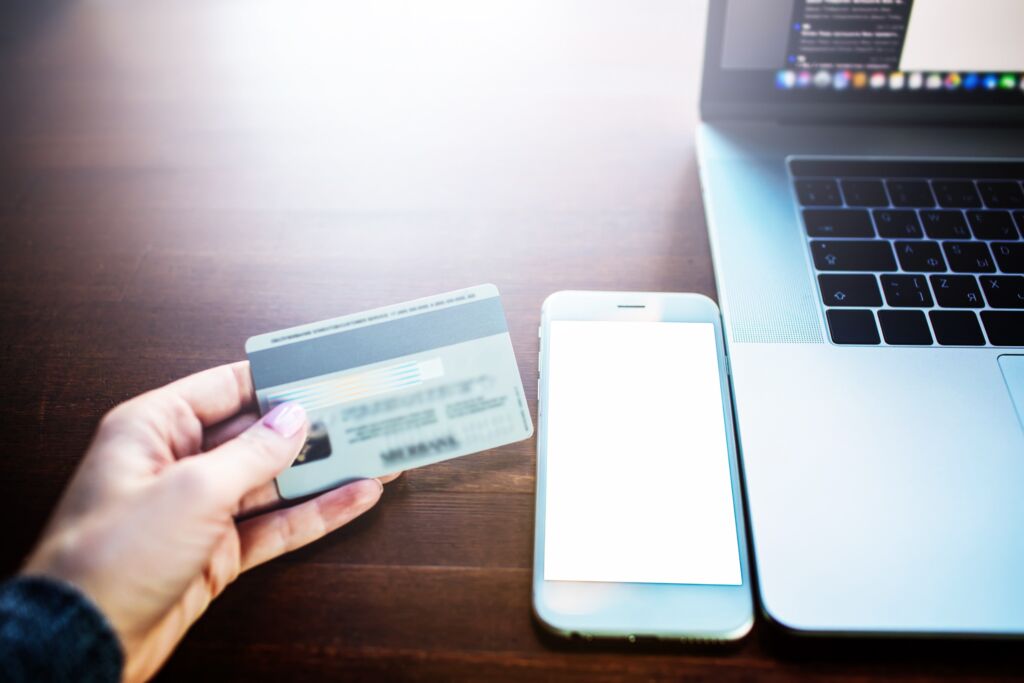
Who buys online?
In the last 10 years, the number of online shoppers has almost doubled. It is not surprising that the biggest jump in popularity occurred in 2020-2022, when the Coronavirus pandemic somehow forced the transition from stationary shopping to the network. The report “The Decade of Polish E-commerce” indicates that during this period, 30% of people who had never shopped this way before started their online shopping activity. Nearly 60% of Internet users believe that online shopping is safe and much more convenient than stationary shopping. Thanks to this, their shopping baskets on the Internet are not very different from stationary ones.
The report “E-commerce in Poland 2022” shows that online shoppers are most often residents of large cities (34% of respondents) and with higher education (40% of respondents). 53% of respondents assessed the financial situation of their household as average, and 40% as good. Women (52%) buy online slightly more often than men (48%), and this method of purchase is most often chosen by people aged 35-40 (33%) and 50+ (30%). Therefore, it is not true that the dominant group choosing online shopping are young people (in the age range of 15-24 years – 17% of respondents, and 25-34 years – 20% of respondents).
What do Polish consumers buy online?
Among the most popular goods purchased online are:
- clothing, and accessories (79%),
- footwear (66%),
- cosmetics and perfumes (65%),
- books, CDs, films (57%),
- pharmaceuticals (55%),
- household appliances (52%),
- sportswear (50%).
The least popular were products from such categories as collectors’ articles, computer software and computer games, as well as building and finishing materials.
There is also a clear gender gap. Women are more likely than men to reach online for clothing, footwear, cosmetics, books and CDs, pharmaceuticals, children’s items, furniture and interior design and jewelry.
Men are much more likely than women to buy cars and car parts, computer hardware and software, games and articles for collectors.
Where do Polish e-consumers make their purchases?
In the research on spontaneous knowledge of shopping websites, the undisputed leader is Allegro, which has been present on the Polish market for 23 years. It is indicated by 85% of respondents. The next places were taken by:
- OLX (36%)
- Zalando (19%)
- Amazon (17%)
- AliExpress (15%)
- Vinted (8%)
- Ceneo (7%)
- eBay (6%)
- Empik (5%)
- eObuwie (3%)
Purchasing on domestic websites is declared by 75% of Internet users, and 32% buy in foreign e-shops. Respondents believe that the main factors encouraging online shopping are a wider choice than in brick-and-mortar stores, lower prices and ease of shopping. Not without significance is also the fact that online shopping consumes less time than traditional shopping.
Among the inconveniences associated with online shopping, respondents mentioned the long waiting time for delivery and its high costs, as well as intrusive advertisements for products they had viewed before. Interestingly, 29% of Internet users have not been affected by any irritating aspects when shopping online.

Quite an important issue related to the purchasing process is the so-called ROPO effect (Research Online, Purchase Offline), i.e. searching for information about products on the Internet and their subsequent purchase in stationary stores. Among the goods susceptible to the ROPO effect, the top three include: building and finishing materials (40%), footwear (3.9%), pharmaceutical products (38%). At the opposite pole lies the so-called Reverse-ROPO effect, i.e. collecting information in a stationary store and buying online. Here, places on the podium are occupied by cosmetics and perfumes (40%), clothing and accessories (38%) and electronics / household appliances (37%).
What motivates Polish Internet users to shop online?
The main motivating factor for online shopping remains round-the-clock availability, convenience (no need to go to the store) and unlimited time to choose a product. The attractiveness of the price (lower than in stationary stores) is indicated by 67% of respondents. In terms of delivery options, the most motivating was the possibility of delivering the order and possible return to a parcel locker. For 88% of respondents, the possibility of free bringing goods into the apartment was encouraging them to shop online. Further positions were taken by instant home delivery (same day delivery) – 83% and weekend delivery, which was indicated by 75% of Internet users.
Delivery options
The most popular form of delivery is the delivery of goods to a parcel machine. It is used by as many as 81% of purchasers. This solution is extremely convenient because their network is very dense and – especially in large cities – Internet users can even have a few not far from home. Thanks to this, they can pick up the order at a convenient time and not be nervous that the courier will arrive just when they are not at home. The parcel in the parcel machine usually remains there for 48 hours. If it is not collect within the indicated time, it returns to the sender. Only in the pre-Christmas period, when the number of shipments increases significantly, does it happen that the machines are overcrowded. In such a situation, the supplier leaves the ordered goods in the nearest machine location, from where it can also be picked up, or waits until a place in the right parcel machine becomes available and the shipment ordered by us goes there.
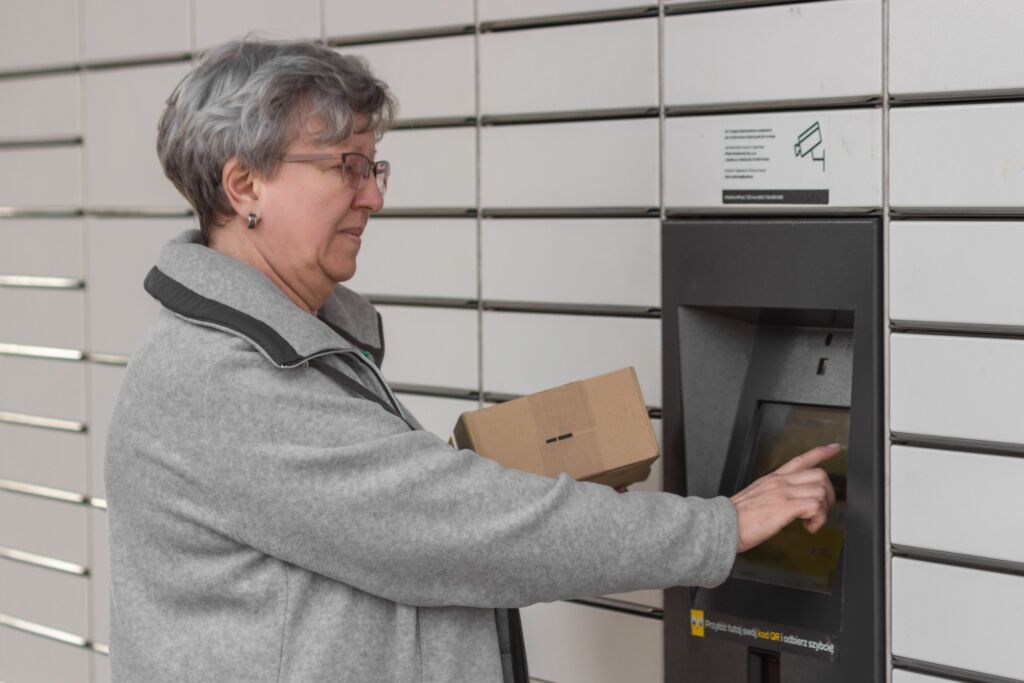
43% of online shoppers choose a delivery by courier, to work or home, which is very convenient for those who work remotely or order goods to their workplace. Carriers usually inform as to what time the package will be delivered and even provide a telephone number to the courier so that you can individually determine the time of delivery. Unfortunately, usually courier delivery is a bit more expensive than in the case of a parcel machine. The most frequently chosen courier companies when shopping online are InPost (36%), DPD (32%), DHL (20%).
Personal collection options are not particularly popular, although in the case of, for example, food products, the click & collect variant works well – the customer places an order online and indicates the selected store or stationary point as a delivery method, from where they collect the goods themselves.
Ecology in Polish e-commerce
Knowledge of sustainability concepts is improving, albeit slowly. 13% of consumers are aware of what SD (sustainable development in business or socially responsible business) means. When choosing an e-store, consumers pay attention primarily to low prices, assortment, promotions and delivery methods. The aspect of sustainable development is taken into account by 35 percent of e-consumers. However, when choosing a product in an e-store, issues related to sustainable development are already important for every second buyer on the web.
As elements supporting conscious online shopping, and thus reducing the risk of returns, consumers indicate good descriptions, photos and information about the composition of products. Unfortunately, despite these indications, most still do not consider returns in e-commerce as an activity that has negative consequences for the environment. 61% of Internet users pay attention to the aspect of ecological product packaging, but only 28% of online shoppers are willing to pay extra for eco-packaging.
Interestingly, e-buyers – surveyed for the purposes of the “Responsible e-commerce 2022” report – assess the Polish e-commerce market as better socially responsible than the EU market (4.08 vs. 3.84 on a scale of 1-6). The worst market in terms of ecology is the intercontinental market (3.58).
Development forecasts for Polish e-commerce
The authors of the report “Prospects for the development of the e-commerce market in Poland 2018-2027” forecast that by 2027 the number of e-consumers in Poland will increase by 3.4 million, and they will be served by an additional 100,000 sellers.
It is estimated that most of the sales in the e-commerce space will take place through the platform model. This increase will be thanks to several factors:
- participation of new players and consistent expansion of their offer on the Polish market,
- further increase in market share by Q-Commerce platforms, which will start to go beyond food categories,
- further improvement of what Allegro has to offer, among other things, in the form of investment in the price offer in selected categories, increasing the share of own sales and a further shortening of delivery times,
- cooperation with external sellers with leading e-commerce players in selected categories such as electronics or home and garden.
More than half (54%) of the increase will come from the following categories: fashion, electronics and health and beauty. Demand for building materials and home furnishings will continue to decline.
Trade fairs
Sources:
- „E-commerce w Polsce 2022” – Gemius, Polskie Badania Internetu, IAB Polska
- „Społeczeństwo informacyjne w Polsce w 2022 r.” – GUS (The Polish statistics office)
- „Perspektywy rozwoju rynku e-commerce w Polsce 2018-2027” – strategy&
- „Dekada polskiego e-commerce” – Izba Gospodarki Elektronicznej (The Chamber of Digital Economy)
- „NetB@nk – bankowość internetowa, mobilna, płatności bezgotówkowe” – Związek Banków Polskich (The Polish Banks Association)
Spis treściTable of contents
- Introduction
- Internet banking
- What devices do Poles use online?
- Who buys online?
- What do Polish consumers buy online?
- Where do Polish e-consumers make their purchases?
- What motivates Polish Internet users to shop online?
- Delivery options
- Ecology in Polish e-commerce
- Development forecasts for Polish e-commerce
- Trade fairs
- Everything
- News (6)
-
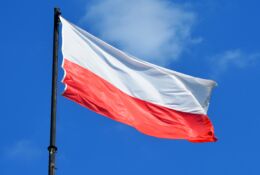 Article
ArticleIndependence Day: Polish history and Poland’s economic transformation
On November 11, 1918, Poland regained its independence after 123 years of partitioning
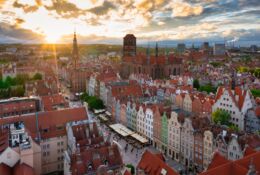 Article
ArticlePoland – an attractive destination for tourists from abroad
“The Best International Destination on a Budget”
-
 Article
ArticleIndependence Day: Polish history and Poland’s economic transformation
On November 11, 1918, Poland regained its independence after 123 years of partitioning
 Article
ArticlePoland – an attractive destination for tourists from abroad
“The Best International Destination on a Budget”
The Export Promotion Portal uses cookies to make it easier for users to use the website and for statistical purposes. If you do not block these files, you agree to their use and saving in the memory of your computer or other device. Remember that you can change your browser settings to block the storage of cookies. More information can be found in Privacy Policy and Terms and conditions.
